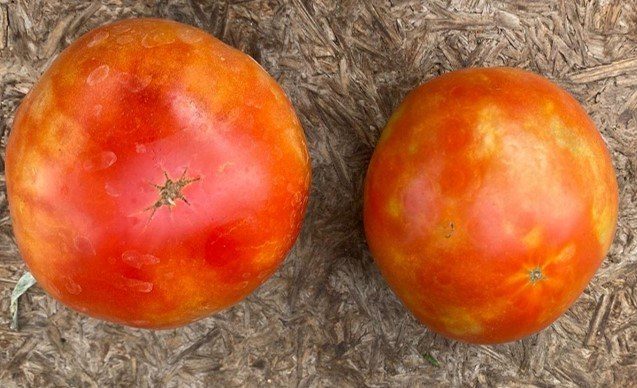News Plant Pest(s): tomato fruit blotch virus (Blunervirus solani; ToFBV)
Tomato growers are still recovering from the impact of tomato brown rugose fruit virus (ToBRFV), and already another virus is knocking at the door: tomato fruit blotch virus (ToFBV). The sudden appearance of this virus creates uncertainty. Researchers, governments and growers need to answer pressing questions about the risks of ToFBV, its diagnosis and effective control.

What is it and where does it occur?
ToFBV belongs to the genus ‘Bluner virus’ within the family Kitaviridae. So far it is only known to affect tomato (Solanum lycopersicum). ToFBV was first identified in Italy in 2018 and has since also been detected in Australia, Brazil, Tunisia, Switzerland and other European countries. In addition, ToFBV sequences have been published from potato (Solanum tuberosum) in Tunisia. However, this is the only source that mentions potatoes. There is no other indication for now that ToFBV can naturally infect potato.
ToFBV has already been identified in Belgium. The first identification was in 2022 during a study of ToBRFV in tomatoes (FOD VVVL project HARMSTAT). After DNA analysis, the Belgian isolate was found to be most closely related to an isolate from Italy (MK517478). The same company experienced a second outbreak of ToFBV in 2024, but as of yet, the virus has not been identified elsewhere in Belgium.

How harmful is this virus and what are the symptoms?
This virus is too new to be able to correctly estimate the economic impact on tomato cultivation and possibly on other crops. In tomatoes, ToFBV mainly causes symptoms on the fruits, such as irregular and spot-shaped ripening, deformities such as indentations and the appearance of dark spots.
At ILVO, experiments are currently running to obtain more information on host plants, symptom formation and potential impact of the virus (FOD VVVL project VIRISK).
How does this virus spread?
The biological and epidemiological properties of ToFBV are not yet fully known. Research can already rule out transmission of ToFBV via mechanical means and infected seeds. Meanwhile, an Italian/Polish collaboration recently (2025) confirmed that the tomato gall mite (Aculops lycopersici) spreads the virus. Severe virus damage in cultivation has always been accompanied by severe mite infestation, including in Belgium. It would therefore appear that good mite control measures also have a direct effect on ToFBV control.

What is ILVO doing?
Within the transnational Euphresco project VIRISK, funded by the FOD Public Health, Safety of the Food Chain and Environment, a comprehensive biological characterization of ToFBV is underway. Within VIRISK there are experiments to map its host range, symptom formation and impact, and transmission tests will be done to investigate the vector (tomato gall mite). This knowledge is essential to complete a risk analysis and to optimize and apply effective management measures.
 Diagnostic Centre for Plants
Diagnostic Centre for Plants